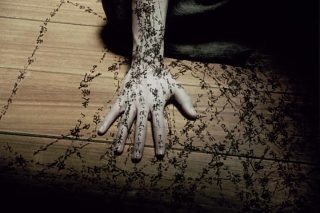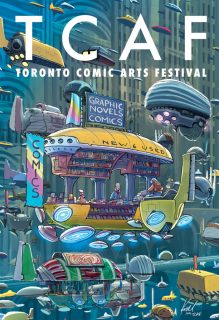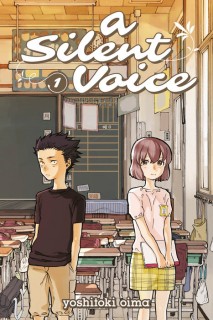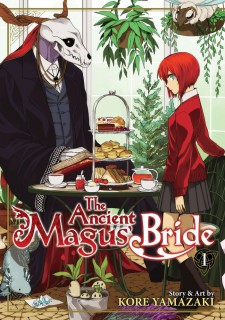I did it! Experiments in Manga is officially six years old! While a respectable achievement in its own right, this anniversary is even more meaningful to me because I honestly wasn’t sure I was going to make it through the year. As many regular readers of Experiments in Manga know, I have needed to significantly cut back on how much I’m writing. I explained a bit about the change in posting schedule and what to expect couple of months ago, but basically my already limited amount of free time has been dramatically reduced. The causes, while time-consuming, haven’t all been bad, though. I’ve bought a house and my family has moved, which will be fantastic in the long run even if it was initially extremely stressful. After passing an audition in February, I’m now playing taiko semi-professionally. (Being an established, performing musician means a tremendous amount to me personally since for many years I had given up on that even being a possibility; I would love to make my living through music one day.) I’m also still trying to adjust to this whole parenthood thing, too.
But even with all that and more going on in my life, I have managed to find a way to keep Experiments in Manga going in some small capacity, so I’m going to celebrate that fact. At Experiments in Manga’s peak I was posting on average four features each week; now I’m doing my best to post two. It hurts to have cut back so much and I’d love to write more but, because writing is so difficult for me to begin with and because I’m so incredibly busy, that’s not a sustainable option for me at the moment. By necessity, at least for the foreseeable future, most in-depth features will rely on me being truly inspired to write. This might not actually be a bad thing; what I’m lacking in quantity I do hope that I can at least make up for in quality. (Though to be completely honest, I’m not at all confident about my ability to do so!)
Anyway, enough of all of that! I have been reading and writing about manga, Japanese literature, and other tangentially related items for six years! Six years! That’s pretty impressive, especially when considering the circumstances. Even though I’m writing less, looking back over the past year I am still happy with much of what I’ve been able to do. The manga and comic reviews that seemed to be particularly popular (or at least most frequently read/visited) from the last year included Hiroaki Samura’s Die Wergelder, Omnibus 1, Inio Asano’s A Girl on the Shore, Rokudenashiko’s What Is Obscenity?, Studio Kôsen’s Windrose, Volume 1, and Yui Sakuma’s Complex Age, Volume 1. I was also able to successfully wrap up my horror manga review project which featured Setona Mizushiro’s After School Nightmare and Yuki Urushibara’s Mushishi.
As for the non-manga reviews from the last year that people seemed to be particularly interested in there was Project Itoh’s Genocidal Organ, Yukito Ayatsuji’s The Decagon House Murders, the tenth volume of Mechademia, Soji Shimada’s The Tokyo Zodiac Murders, and Ryu Murakami’s short story collection Tokyo Decadence. (I’ve apparently been reading a fair amount of Japanese mystery and crime fiction of late, which is reflected in that list.) Although I’ve written mostly reviews at Experiments in Manga, the features that I often end up enjoying working on the most tend to be the non-reviews like my write-up of TCAF 2016 or my overview of Mushishi adaptations. The post from the last year that was probably my personal favorite was A Moment of Respite in Kohske’s Gangsta, some random musings sparked by a single scene in the manga. Generally, these types of features require significantly more inspiration than standard reviews, but I suspect that they may become slightly more common going forward as I shift my approach to writing at Experiments in Manga.
One last thing: I’d like to thank all of my readers, past and present, old and new. When I started Experiments in Manga it was in part to connect more with other readers and fans of manga and I think that it helped me to do that. I primarily write for myself, but it makes me tremendously happy to know that at least on occasion other people actually do find the site useful or interesting. I love hearing from people who have given something a try or have learned about something new because of what I’ve written here. I hope that in the coming year Experiments in Manga can continue to inspire people even if I’m not able to write as much as I once was. Thank you to everyone for your kindness and support over the last year and for sticking with me! It’s time to get started on year seven.

 Over the last few years one of the features at Experiments in Manga has been a monthly manga review project. What makes these reviews any different from the rest found on the site? Not much, really, except that the readers of Experiments in Manga actually helped to choose the manga that would be featured. The subject of my third monthly manga review project was
Over the last few years one of the features at Experiments in Manga has been a monthly manga review project. What makes these reviews any different from the rest found on the site? Not much, really, except that the readers of Experiments in Manga actually helped to choose the manga that would be featured. The subject of my third monthly manga review project was 




















